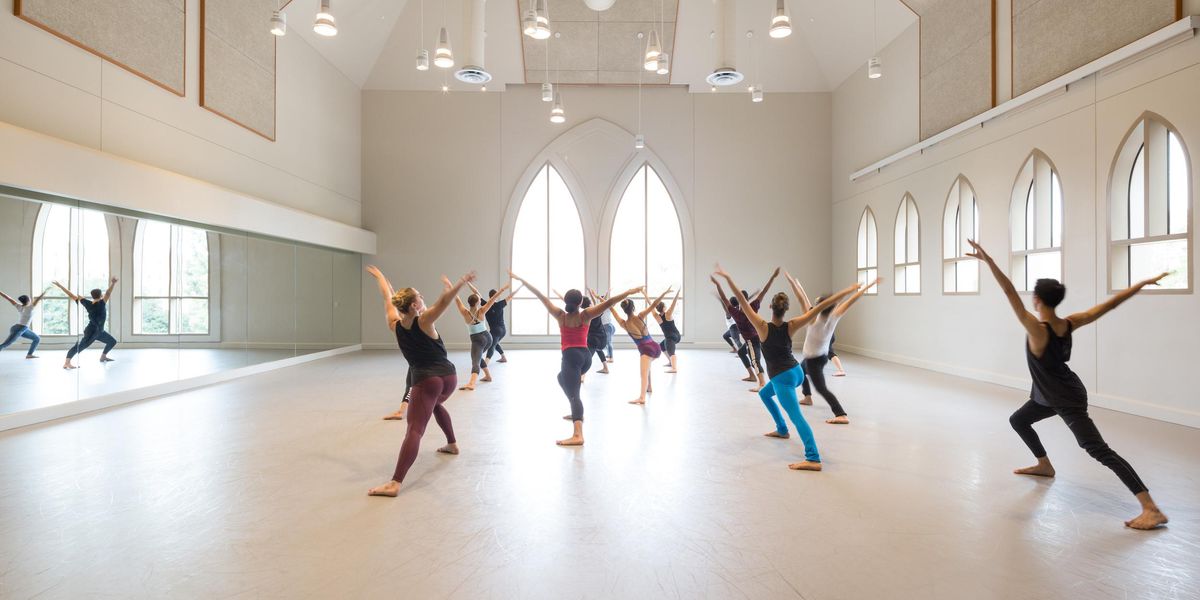Summer Study Guide 2011: Jete-ing Across Cultures
Students in New York get a taste of Bolshoi training—and the chance to study abroad.
A big, light-filled studio; 25 or so coltish girls in black leotards; a kind-looking, dark-haired teacher walking among them, exhorting, showing steps with her hands. It could be any New York ballet class, except for an extra figure in the room, a striking young woman in a mini-skirt, perched on a chair at the front, emitting a concentrated stream of instructions: “Put legs instantly in passé,” she says almost tonelessly. “Fifth position, then passé. Don’t hide yourself. If you like what you’re doing, you must show it.”
She’s one of the translators employed by the four-year-old Bolshoi Ballet Academy Summer Intensive—there’s one in every class. And what she’s conveying, in English, is what the master teacher from the real Bolshoi Ballet Academy in Moscow—officially, the Moscow State Academy of Choreography—has just said in Russian. The system appears to work seamlessly. Not only are students hearing their teachers’ authentic comments (just a touch out of sync), they’re getting, at least in this class, a quality that’s worth its weight in gold—sympathetic attention. Forget the stereotype of the intimidating Russian teacher yelling at students. Irina Syrova, a 31-year veteran of the Bolshoi Academy in Moscow, offers not just attention but enthusiasm. “Wiz a smile,” she says from time to time in her own English.
And the students are visibly giving their all.
“The training is phenomenal here,” says Joy Womack, subject of a recent New York Times article about American ballet students studying in Russia. Womack was invited, after the 2009 Bolshoi summer intensive, to study at the Bolshoi’s Moscow academy itself; she has just returned to New York for the 2010 summer intensive. “What’s different from American training is two things: They put more emphasis on turnout (180 degrees!) and they work more on expressing artistry—the way you present yourself and enjoy what you’re doing.”
Another advanced student, Micah Garton, from West Des Moines, Iowa, echoes Womack. “It’s not just the steps we’re working on here, but the soul,” she says wonderingly. “And also the use of the whole body—arms, eyes, feet, fingers.”
Womack and Garton belong to the older students’ branch of the Bolshoi intensive, which takes place in New York, in the studios of the American Musical and Dramatic Academy. Three groups of girls, on three levels, and one group of boys, take four classes a day—technique, repertory, character, and partnering (with the help of eight advanced boys from Moscow)—for either three or six weeks. Along with chaperones, mostly moms and relatives (who get free lodging), they live in two different dormitories in the city; after their demanding days, they can explore the city. At the same time, the younger students, ages 9 to 14, are taking their four classes a day at the Westover School in Connecticut, where they live, study, and even swim.
Many of the older students are veterans of more entrenched, American-style summer courses, to which they may return after sampling Bolshoi training. “Choosing this summer program was a big decision for Micah,” says Micah’s mother, Cee Cee Garton. “Do we go to PNB this year, or back here to the Bolshoi, where Micah studied in 2009?” After much deliberation, “Micah decided this is the training she loves.”
In Garton’s case, the decision paid off. She was chosen, with nine other students, for a prestigious State Department–sponsored program (the National Security Language Initiative for Youth), newly linked this year to the summer intensive, that allows the 10 students to study ballet and Russian language for an additional six weeks at the Bolshoi Academy in Moscow. Not only did Garton survive the Moscow trip in record heat, she was invited to return, along with 14 other summer intensive grads, for full-time training (trainee track) at the Moscow Bolshoi Academy. Two other summer intensive participants, Deanna Pearson and Chang Hong Chung, were awarded two weeks this winter at the Bolshoi Academy, with an appearance in the school’s gala performance.
This bicultural balletic encounter is sponsored by the Russian American Foundation, a New York–based organization whose mission is to promote cultural exchange, particularly among young people. The Bolshoi Academy had an earlier presence in the U.S., notably in Vail in the 1990s. But four years ago, Bolshoi dean Marina Leonova began talks with RAF—and the present summer intensive was born. Leonova is the artistic director of the American summer program; she visits New York often and hand-picks the teachers who she thinks will work best in America.
The six-week New York course ends with a performance, for which, in the final week, teachers and students rehearse strenuously. By all reports, concerts have been memorable, as teachers and management have battled it out to merge excellence and inclusiveness. But to the students—and the teachers too—the core of the summer experience is the day-in, day-out work on technique, expression, and stamina.
“We try in this summer course to give attention to every child,” says Syrova.
“Of course it’s hard to do a lot in three weeks (or six),” says tall, no-nonsense teacher Vera Potashkina. “I work most on arms and head—you can’t really alter the legs in a short time.”
“But even in a short time,” Syrova says with her beatific smile, “children are changing before our eyes.”
Elizabeth Kendall is a dance writer and writing professor based in NYC at work on a book about Balanchine’s youth.
Partnering class at the BBA New York summer intensive. Photo by Lioudmila Koudinova, courtesy RAF




